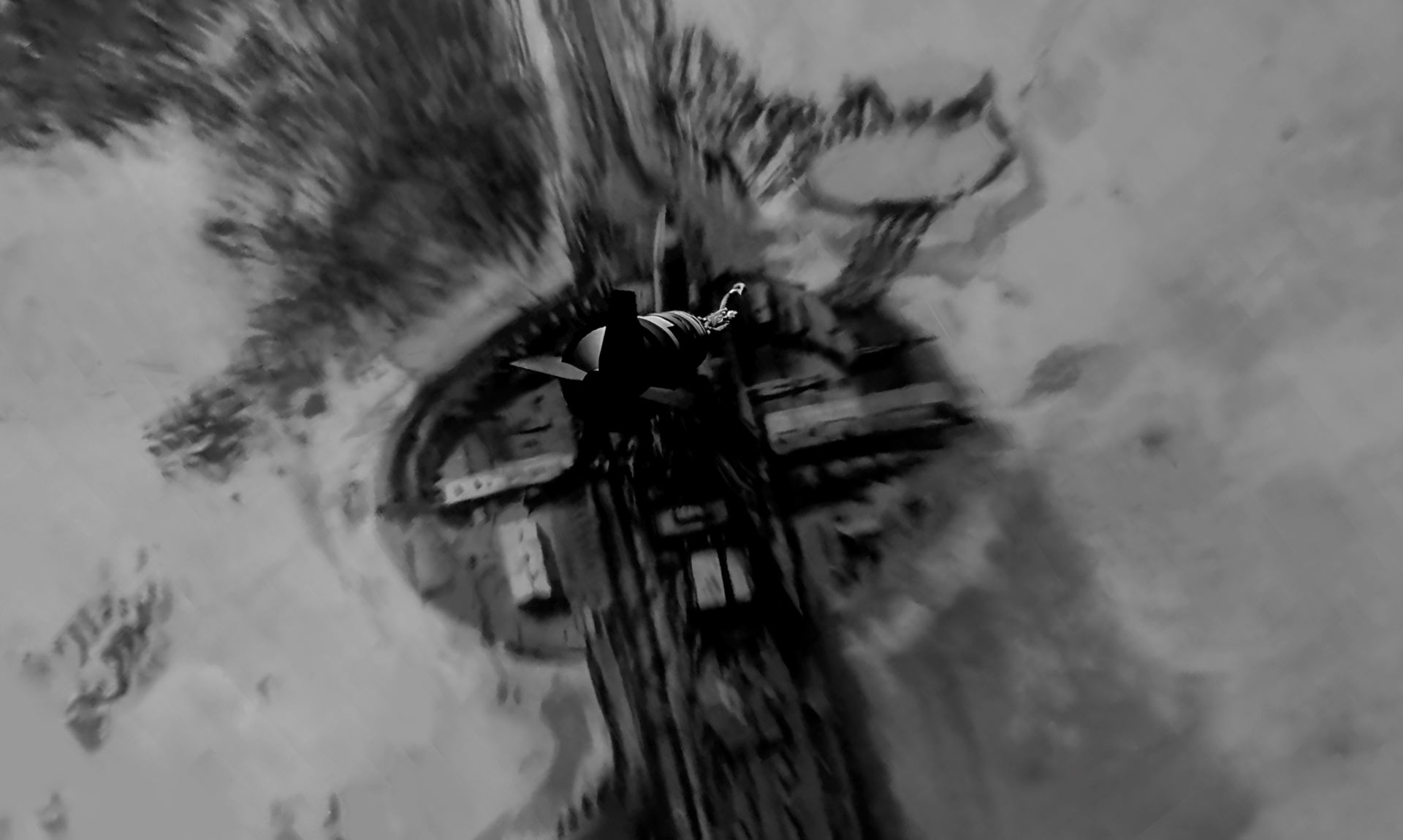Selections from the films of Stanley Kubrick chosen for the possibility of rendering multiple stills of various depths, focal points and pans into a singular painted/photographic work. Changing exposures, colour saturations and lens vignetting have been blended and adjusted to the rigeurs of the master himself. Scenes are chosen for both the mechanics and beauty of their compositions and should be read for what their narratives reveal of both director and viewer.
2018
42"x 13”
The forest landscape of Fear and Desire, Kubrick's rare first film shot in California with a crew of 15. The anti-war screenplay was written by Howard Sackler, a high school classmate of Kubrick's. The sentiment of the film and opening landscape is well described in the off-screen narration
There is a war in this forest. Not a war that has been fought, nor one that will be, but any war. And the enemies who struggle here do not exist unless we call them into being. This forest then, and all that happens now is outside history. Only the unchanging shapes of fear and doubt and death are from our world. These soldiers that you see keep our language and our time, but have no other country but the mind.


2018
129"x 105”
A reconstruction of Target 384 (a Soviet ICBM complex) from numerous stills beginning with the final frame of Bomber commander Major T. J. Kong riding the bomb to its detonation triggering the Doomsday Machine.
For a year, rumours had circulated among high-level Western leaders - - that the Soviet Union was at work on the "ultimate weapon". A doomsday device. Intelligence sources traced the site of the top-secret project - - to the foggy wasteland below the Arctic peaks of the Zarkov islands. What they were building, or why they chose such a remote place, - - no one could say.
2018
45.5” x 18.5"
Archival print
The bath scene from Barry Lyndon, a long steady zoom of actress Marisa Berenson playing Lady Honoria Lyndon. Kubrick used candles for lighting and an ultra fast 50mm lens (the same lens used in the Apollo landing) for interior scenes to create an authentic look reminiscent of paintings by Hogarth. Despite this level of precision, the frame by frame reconstruction required exposure and saturation adjustments and vignetting removal to further recreate the entirety of Kubrick's masterful painterly composition.